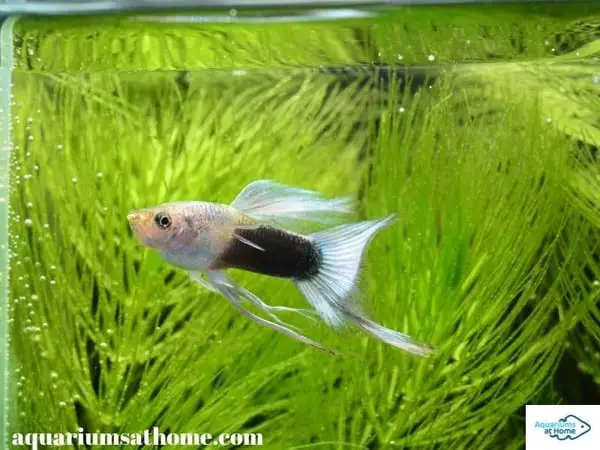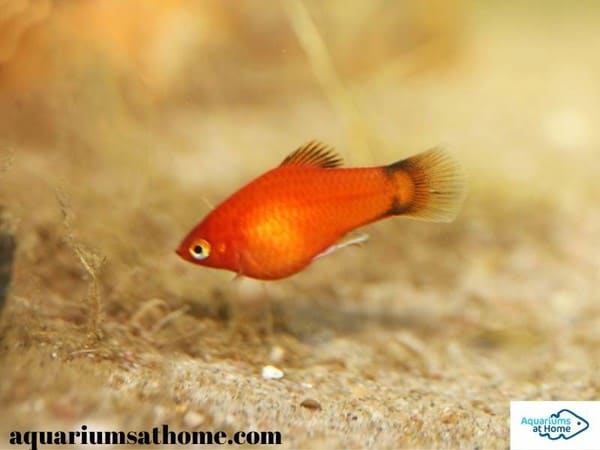Crossbreeding refers to the ability for two different species of animal to mate and reproduce. When it comes to fish, you may be curious as to which types can hybridize successfully with each other. If you have a freshwater aquarium, you may be wondering if mollies and platies can crossbreed, for example? Well, the answer is…
No, mollies and platies can’t crossbreed. For crossbreeding to occur, two species of fish must be closely related with similar congenital traits (DNA). Platies can breed with swordtails as they’re both from the Poeciliidae family. Conversely, mollies can breed with endlers as they’re both from the Poecilia family.
Now that you know mollies and platies can’t breed with each other, let’s take a closer look at this topic. I’ll explain whether or not fish (as a type of vertebrate animal) can indeed crossbreed and if so, which species in particular can mate with mollies and platies. I’ll also discuss ways to increase your chances of successful crossbreeding as well as how to encourage both mollies and platies to reproduce in captivity.
So, if you’re ready to learn more about the breeding and crossbreeding habits of both mollies and platies, then let’s get begin!
Can Fish Crossbreed?
Yes, fish can crossbreed, provided they share ancestral DNA and come from the same fish family. The resulting offspring are referred to as ‘hybrids’ and will grow up without genetic defects so long as the chromosomal union is successful.
As with other living creatures, ‘survival of the fittest’ comes into play when different species of fish crossbreed. The weaker fry usually die on their own shortly after birth or get eaten by either their parents, their siblings or other predatory fish. This ensures that only the strongest live-on.
Can Mollies Breed with Platies?
As mentioned above, mollies and platies can’t breed. They belong to separate fish ‘families’ that don’t share the same genetic material or DNA. If you happen to have both mollies and platies in your tank and you notice baby fish swimming about, chances are one or the other was already pregnant by the time they were introduced to your community tank.
Mollies and platies are both livebearers, meaning they give birth to living fry rather than laying eggs. As a result, they can store sperm for long periods of time before even appearing pregnant! Babies can be born several months after copulation. Therefore, it’s likely reproduction occurred while in captivity at the pet shop before you purchased the fish.
What is the Difference between Mollies and Platies?
Apart from belonging to a separate genus of tropical fish, mollies and platies differ from one another in the following ways:
- platies are usually brighter and more colorful than mollies.
- platies tend to have shorter, rounder bodies than mollies.
- mollies have longer fins and larger snouts.
- platies are often more aggressive than mollies.
- mollies can tend to grow larger than platies.
- mollies, though technically a freshwater fish, prefer brackish conditions.
- platies are usually more active than mollies.
Can Mollies Breed with Guppies?
Mollies can breed quite easily with guppies. Both types belong to the same group of fish known as the Poecilia family, making it possible for them to mate and reproduce. As well, they’re both peaceful in nature and this similar disposition makes it simple for them to copulate.
The downside, however, is that the offspring resulting from mollies and guppies crossbreeding usually don’t grow into healthy adults but rather die young. The imbalanced fry are often stunted at birth and therefore unable to reach full maturity.
Which Fish Can Breed with Mollies?
Other than guppies, mollies can crossbreed with endlers as well. Endlers are livebearers that originated from the Paria Peninsula in Venezuela. These tropical freshwater (that can also be converted to brackish conditions in captivity) often hybridize with both mollies and guppies in a community tank environment.

Can Platies Breed with Guppies?
Platies can’t breed with guppies. They belong to different fish families (the Poeciliidae family and the Poecilia family, respectively) which don’t share the same genetic code. It’s scientifically impossible for these two species to mate and reproduce.
Which Fish Can Breed with Platies?
Platies can breed with other species of fish from the genus Xiphophorus like swordtails. Swordtails are a type of freshwater fish native to North and Central America, namely Mexico through Honduras. They can be conditioned to survive brackish water conditions (along with platies) in a captive environment.
How to Improve Your Chances of Successful Fish Crossbreeding?
To improve your chances of breeding (or crossbreeding) successfully, you need to create the ideal aquatic environment, free of predators with an abundance of nutritious food. The water parameters must be ‘just right’ to eliminate stress and maintain fish health.
Statistically speaking, crossbred or hybrid offspring don’t have the same survival rate as species-specific fish. Babies usually won’t grow to full maturity as they’re predisposed to congenital defects and often stunted at birth. Many are weak and either die or get eaten before they reach adolescence.
That said, crossbreeding fish (if successful) can be an amazing feat and produce fascinating results – a new and unique species waiting to be revealed! Chances of fish crossbreeding are greater in captivity than in the wild. Therefore, a community tank may be the ideal environment for hybrid nature to ‘take its course.’
How to Encourage Molly Fish to Breed?
To breed molly fish – either with other mollies, guppies or endlers – the temperature in the tank should be 80 degrees Fahrenheit or slightly higher with a pH of 8.0. Adding a bit of salt to the water may help as molly fish prefer brackish water conditions. Do so cautiously, however, and don’t add salt to a tank with other freshwater fish.
A planted tank is beneficial as the algae acts as a food source for both adults and offspring alike. Since mollies are livebearers, you must have at least one male and one female – though chances of breeding are better with two or three females. Watch for signs of courtship followed by a change in girth for one or more of the females.
After giving birth, remove the baby fry and place them in a nursery tank or a breeding box/fry trap inside the aquarium. Feed them a varied diet of both live foods and fish flakes once or twice a day. Molly fry are sensitive to toxins so make sure to test the water daily and perform weekly partial water changes. In 2 to 3 months, you can release them back into the community tank.

How to Encourage Platy Fish to Breed?
To breed platy fish with other platies or possibly swordtails, the temperature in the tank should be at least 75 degrees Fahrenheit with a pH level around 8.0. Since platies are avid breeders, mating should take place shortly after the male and female(s) are introduced to the tank.
As a type of tropical fish, platies need freshwater conditions to thrive in captivity. Mimicking their natural habitat is key to successful breeding. A heavily planted aquarium is recommended as fry have a much better chance at survival when the tank contains plenty of greenery for cover.
Placing baby fry in a nursing tank immediately after birth is necessary since adults will eat their offspring! Feed them an omnivorous diet including fish flakes, freeze-dried bloodworms/brine shrimp and frozen vegetables. After 3 months, the juveniles can be re-introduced to the community tank.
Conclusion
To conclude, it’s physically impossible – from a scientific standpoint, that is – for mollies to breed with platies. For crossbreeding to occur between different species of fish, the two in question must be linked ancestrally or share the same congenital traits.
I hope this article has been helpful to you and answered your questions regarding whether (or not) mollies can breed with platies. Thanks for reading and good luck with your aquarium endeavors!
Related Posts
What Do Guppies Need to Breed?
What is a 40 Gallon Breeder Tank and why you might want one
When is Breeding Season for Goldfish?
What Livebearers can Crossbreed?
Types of Platy Fish for Your Aquarium




